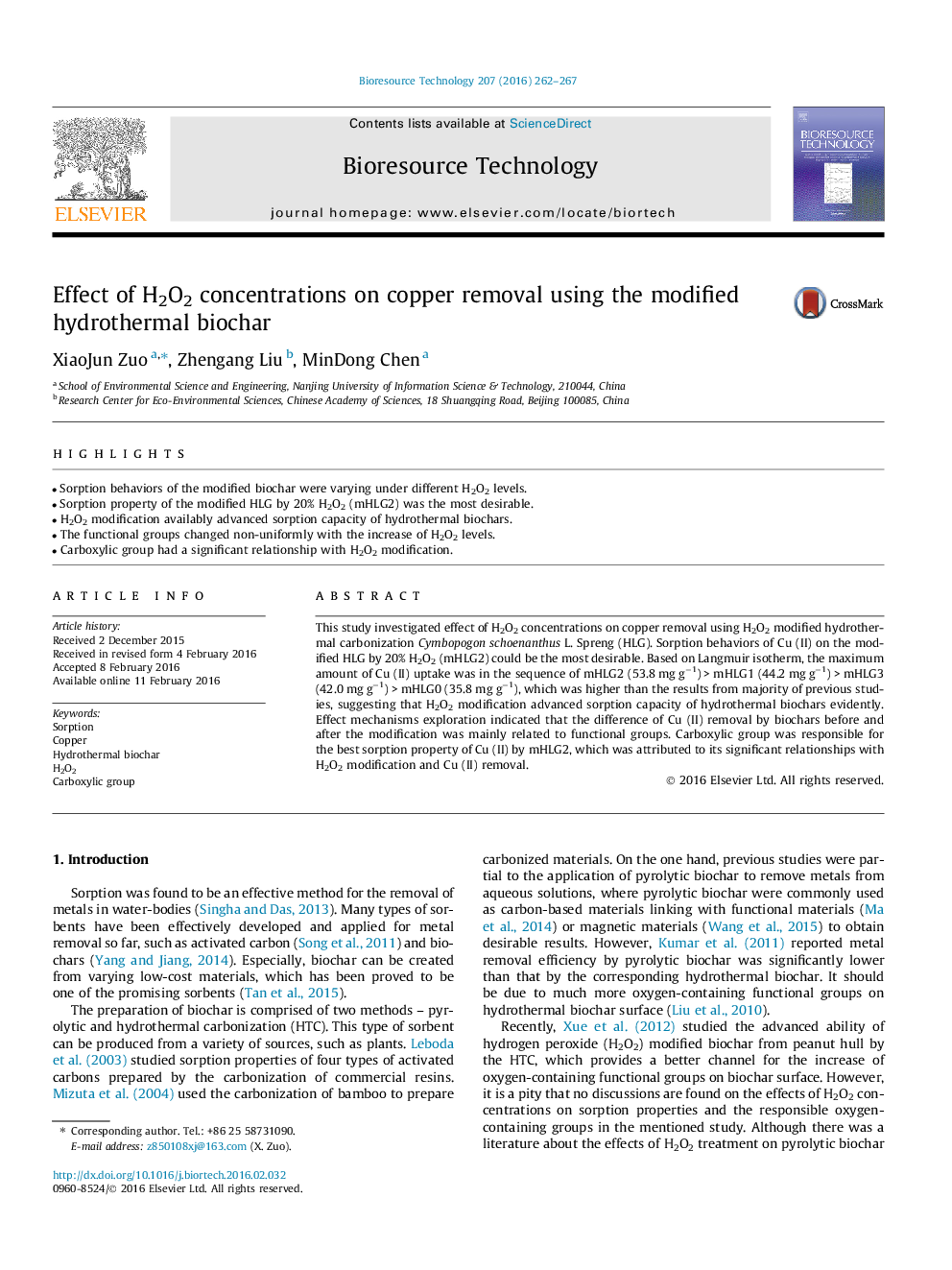| Article ID | Journal | Published Year | Pages | File Type |
|---|---|---|---|---|
| 7072125 | Bioresource Technology | 2016 | 6 Pages |
Abstract
This study investigated effect of H2O2 concentrations on copper removal using H2O2 modified hydrothermal carbonization Cymbopogon schoenanthus L. Spreng (HLG). Sorption behaviors of Cu (II) on the modified HLG by 20% H2O2 (mHLG2) could be the most desirable. Based on Langmuir isotherm, the maximum amount of Cu (II) uptake was in the sequence of mHLG2 (53.8 mg gâ1) > mHLG1 (44.2 mg gâ1) > mHLG3 (42.0 mg gâ1) > mHLG0 (35.8 mg gâ1), which was higher than the results from majority of previous studies, suggesting that H2O2 modification advanced sorption capacity of hydrothermal biochars evidently. Effect mechanisms exploration indicated that the difference of Cu (II) removal by biochars before and after the modification was mainly related to functional groups. Carboxylic group was responsible for the best sorption property of Cu (II) by mHLG2, which was attributed to its significant relationships with H2O2 modification and Cu (II) removal.
Keywords
Related Topics
Physical Sciences and Engineering
Chemical Engineering
Process Chemistry and Technology
Authors
XiaoJun Zuo, Zhengang Liu, MinDong Chen,
